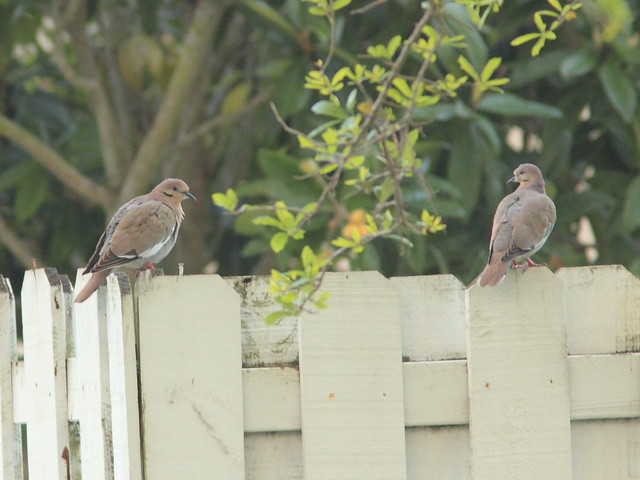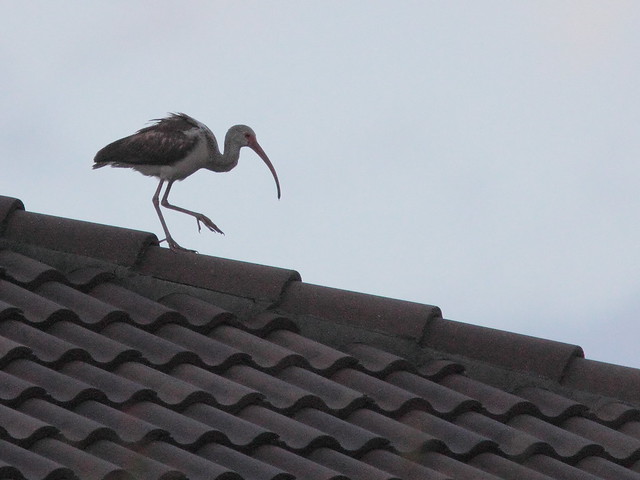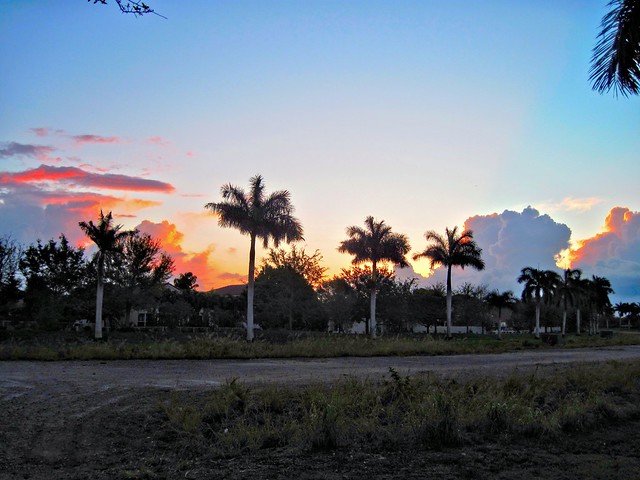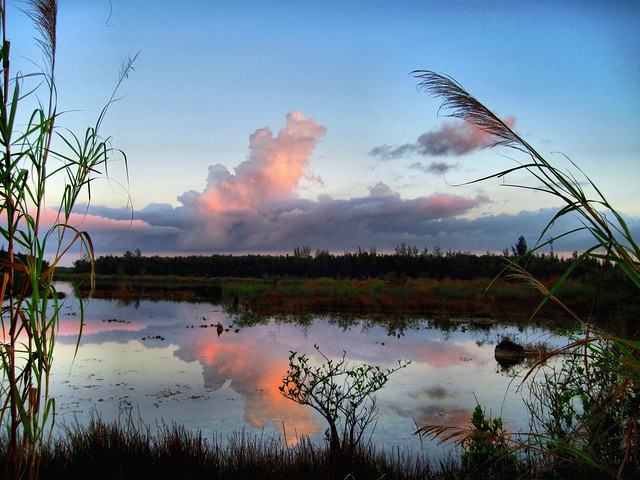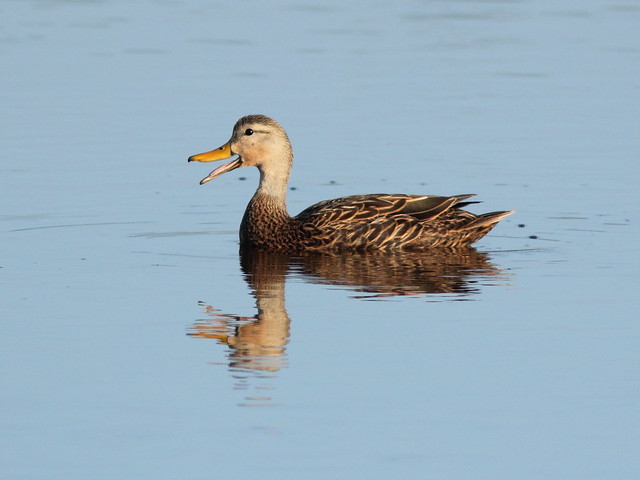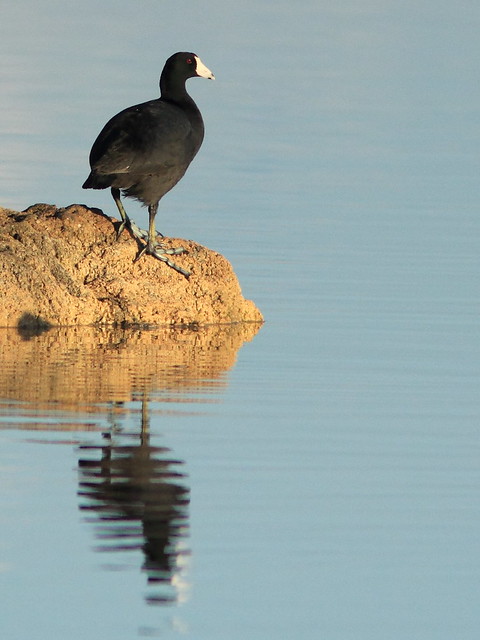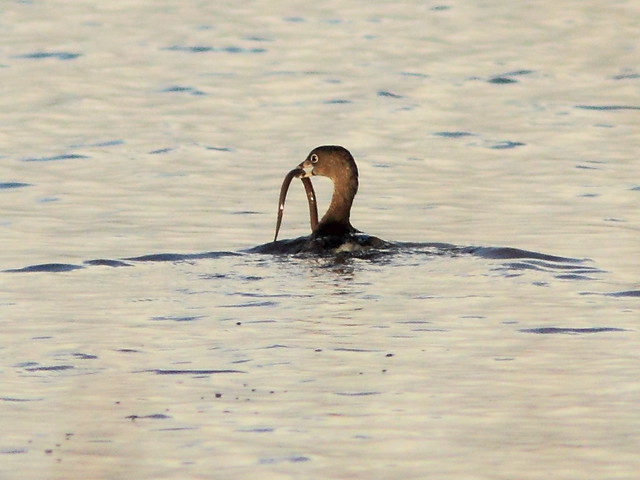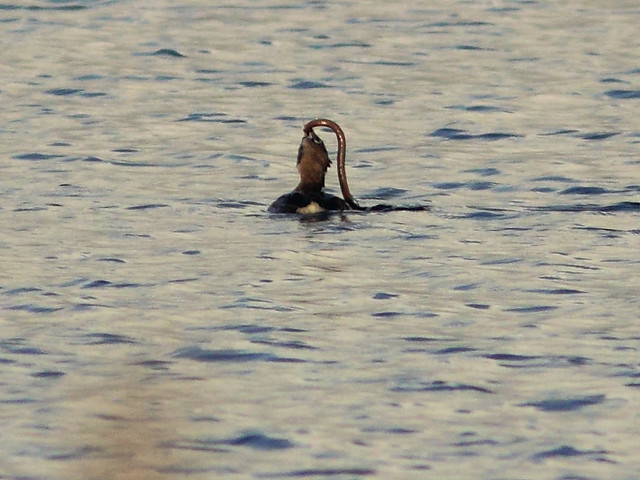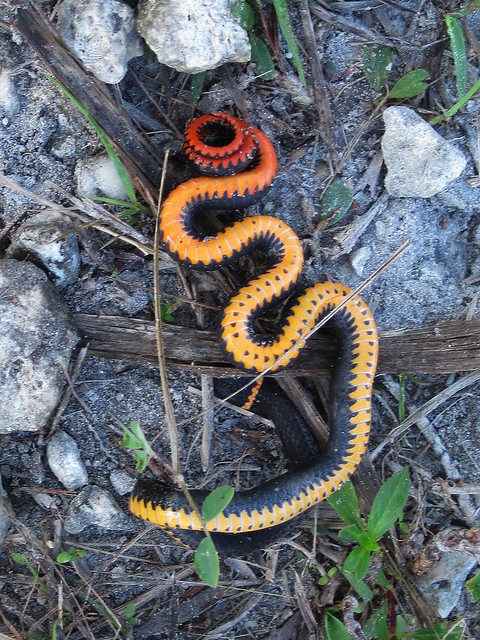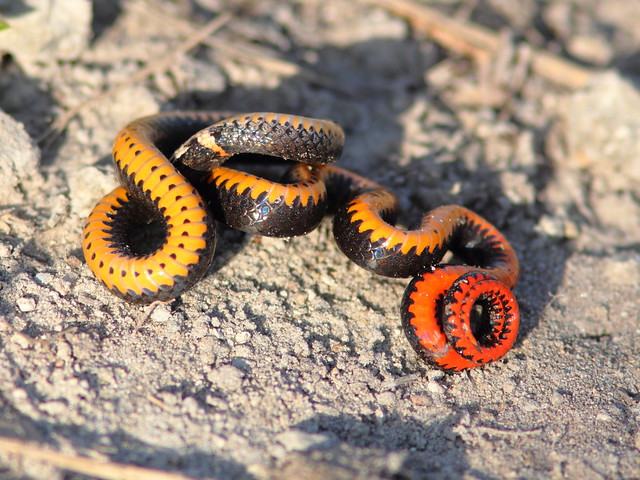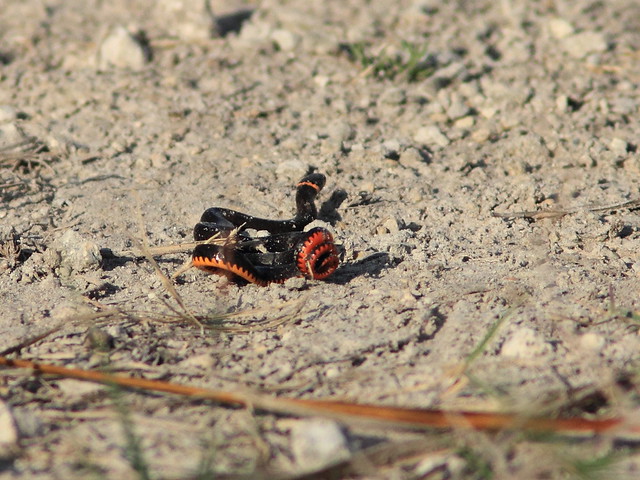Posted by: Ken @ 4:49 am
It was just another ho-hum Old MacDonald morning out on the wetlands, with only common birds species that would not thrill some of our “Robo-Birder” friends. At least we got home before the rains came.
Walking the same birding patch every morning is not boring. It is a bit like singing “Old MacDonald Had a Farm.” There is a certain joy in its familiarity, its cadence, the repetition. With each verse, you know what comes next– usually.
This morning, before sunrise, Mary Lou and I step a few doors from our South Florida home, exit the subdivision gate, and after ducking through a gap in the fence we set foot on on the coarse gravel of the road leading into the wetlands, It will soon become a busy thoroughfare. As usual, there is a pattern to our bird sightings.
As expected, a White-winged Dove is singing “Who cooks for you?” to its mate on a back yard fence along the way. It’s too dark for photography, but I crank the ISO up to 1600 and pull off a shot anyway.
Another predictable bird, a juvenile White Ibis walks on a roof, but this morning its graceful movement along the ridge tiles imparts delicate beauty.
We stop on the road and cast an anxious look back at the storm clouds gathering over the ocean. This is not a morning to venture deep into the wetlands.
The reliable abandoned telephone pole hosts two of its reliable tenants, an Osprey and an American Kestrel.
The same old Eastern Towhee is singing in the roadside bushes.
When we reach Harbour Lake, the sun is rising behind us.
The first rays are reaching the tops of thick clouds that are forming over the Everglades to the west. We will soon be surrounded by storms.
The weather may be closing in, but sunlight reaches the surface of the lake. The usual Great Egret poses nicely in the usual spot.
Near it is just another plain old brown Mottled Duck. “With a quack-quack here and a quack-quack there…”
An American Coot, usually seen swimming and diving, now shows off its long, lobed toes.
“Here a Myrtle, there a Palm, everywhere a yellow-butt…” Ready to depart, this representative of the Western race of Palm Warblers, so drab all winter, is changing into brighter breeding colors.
A Prairie Warbler breaks the monotony.
“With a chip-chip here and a chip-chip there, everywhere a chip-chip…” Look! what is THAT? A Pied -billed Grebe with a snake?
No, not a snake. This grebe is struggling with a creature that on closer examination exhibits a vertically flattened tail and external appendages or gills– a type of salamander, probably a Southern Dwarf Siren (Pseudobranchus axanthus), or possibly an Amphiuma species (another eel-like aquatic salamander). “Sirens are generally eel-like in form, with two tiny, but otherwise fully developed, forelimbs. They range from 25–95 cm (9.8–37 in) in length.[1] They are neotenic [they retain juvenile physical characteristics well into maturity– Ken] , although the larval gills are small and functionless at first, and only adults have fully developed gills. Because of this, it is most likely sirens have evolved from a terrestrial ancestor that still had an aquatic larval stage. Like amphiumas, they are able to cross land on rainy nights” (Ref: Wikipedia).
At first the grebe holds the siren near its middle, and it wiggles violently. The grebe dives and stays under for several seconds, then comes up with the siren grasped near its head. The siren is still contorting as the grebe attempts to swallow it. The grebe disappears under the water with its prey and surfaces somewhere out of sight, so I do not know the outcome of the struggle.
Speaking of snakes, a couple of days ago at this same spot I saw this Ring-necked Snake, about 11-12 inches in length. (The first time I saw one in Florida I thought I had discovered a new species unknown to science– certainly not something I had seen back home in New Jersey or New Mexico.) I blocked its escape and then captured it by hand.
As soon as I held the snake it stopped trying to escape and coiled, belly-up, exposing its bright yellow and orange undersides. It remained motionless as if playing dead, but when I turned it over, it immediately resumed the belly-up position.
It hid its head among the coils.
I watched from a distance as the snake slowly uncoiled and slithered away.













